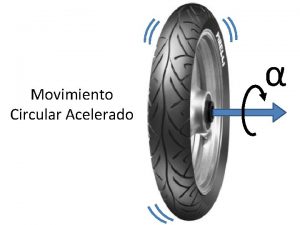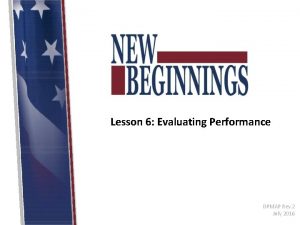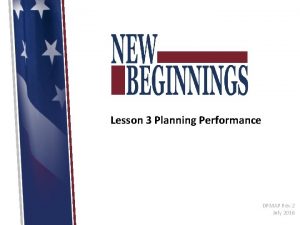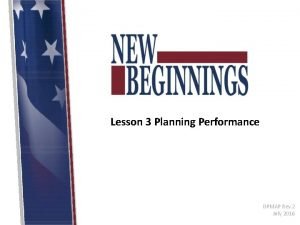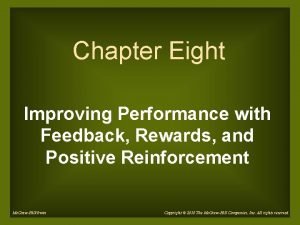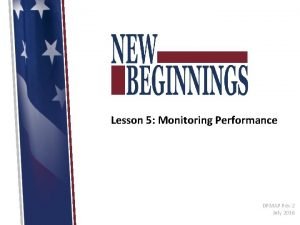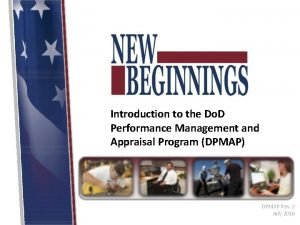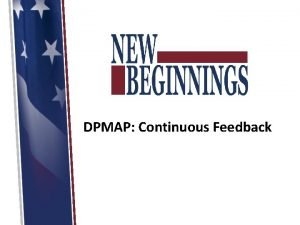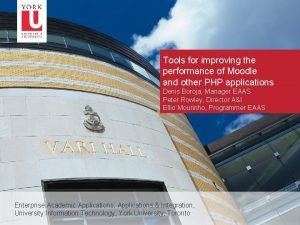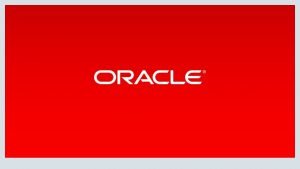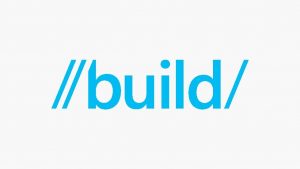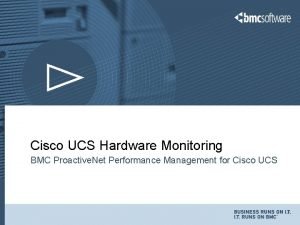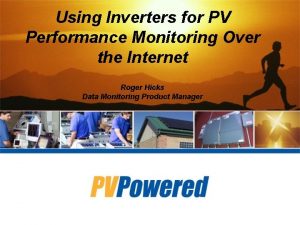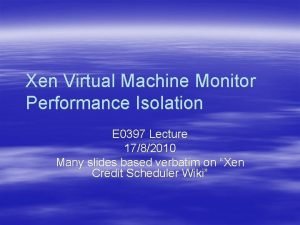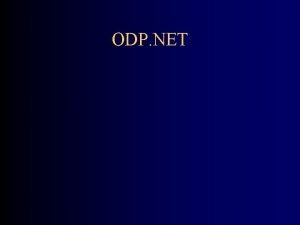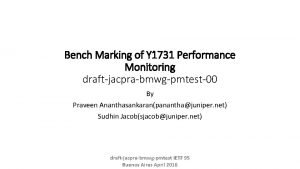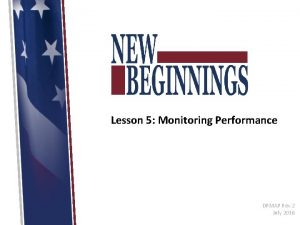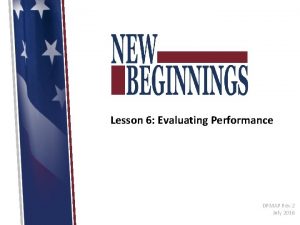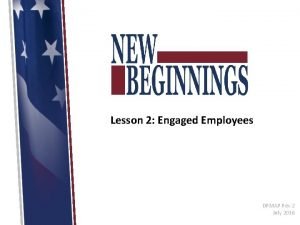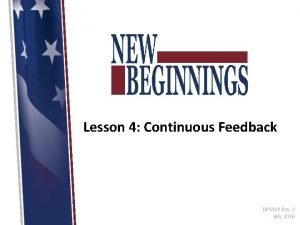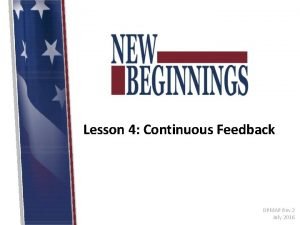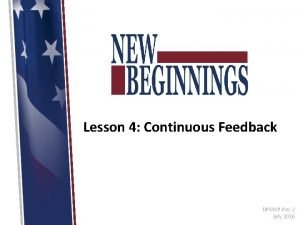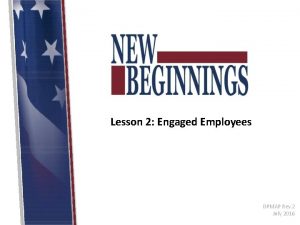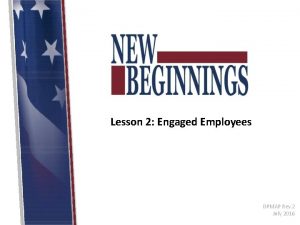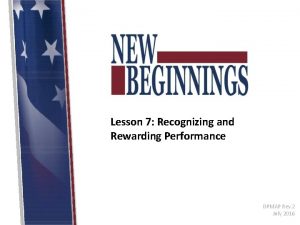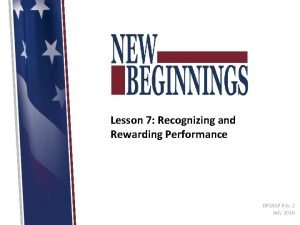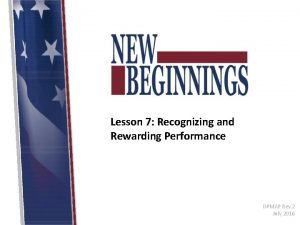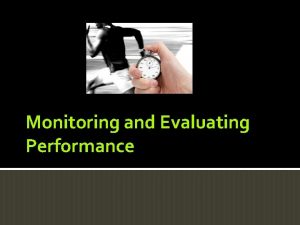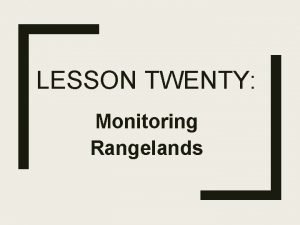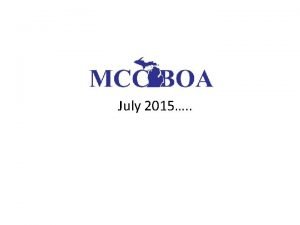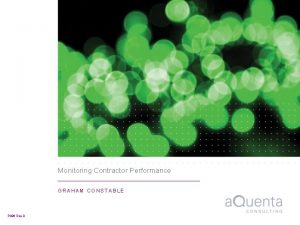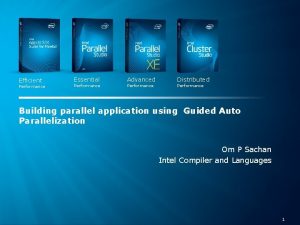Lesson 5 Monitoring Performance DPMAP Rev 2 July













































- Slides: 45

Lesson 5: Monitoring Performance DPMAP Rev. 2 July 2016

IT’S NOT ABOUT THE 365 TH DAY DPMAP Rev. 2 July 2016 (2)

Learning Objectives Upon completion of this lesson, you will be able to: 1. 2. 3. 4. Identify key aspects of the Monitoring Phase. Explain the value of monitoring performance continually. Explain the process used to address performance issues. Identify elements of a formal Performance Improvement Plan (PIP). IT’S NOT ABOUT THE 365 TH DAY DPMAP Rev. 2 July 2016 (3)

Performance Management Ø Performance management is an ongoing process consisting of: § Planning work and setting expectations § Monitoring performance continually § Evaluating performance in a summary fashion § Recognizing and rewarding good performance PLANNING EVALUATING PERFORMANCE MANAGEMENT MONITORING RECOGNIZING AND REWARDING IT’S NOT ABOUT THE 365 TH DAY DPMAP Rev. 2 July 2016 (4)

Monitoring Performance Monitoring The ongoing assessment of performance compared to the stated expectations and ongoing feedback to employees on their progress toward reaching their goals DODI Instruction 1400. 25, Vol. 431 IT’S NOT ABOUT THE 365 TH DAY DPMAP Rev. 2 July 2016 (5)

Monitoring Performance Monitoring Phase Two-Way Communication Emphasize Organizational Goals Frequent Performance Discussions Focus on Performance Timely Recognition and Rewards Early Detection of Performance Issues IT’S NOT ABOUT THE 365 TH DAY DPMAP Rev. 2 July 2016 (6)

Monitoring Phase Roles and Responsibilities Supervisors ü Continuously communicate; provide encouragement, meaningful feedback, and recognize accomplishments ü Provide employees an opportunity to highlight their successes relative to the performance elements and standards ü Identify needed changes to performance elements as appropriate ü Review IDPs to identify development opportunities ü Identify employee’s skills and abilities, and look for opportunities to further develop them ü Document performance discussions ü Recognize and reward performance throughout the performance appraisal cycle IT’S NOT ABOUT THE 365 TH DAY DPMAP Rev. 2 July 2016 (7)

Monitoring Phase Roles and Responsibilities Employees ü Ask questions ü Engage in self-development ü Keep supervisor informed on outcomes ü Provide input during performance discussions ü Identify changes to performance elements as appropriate ü Identify challenges impeding ability to be successful ü Work with supervisor to find solutions to barriers to success ü Keep a record of their accomplishments so that they are able to discuss them throughout the cycle IT’S NOT ABOUT THE 365 TH DAY DPMAP Rev. 2 July 2016 (8)

Effective Communication Effective communication includes two-way, ongoing, and meaningful feedback that contributes to the overall success of the employee and the organization • Individual performance expectations are linked to organizational goals • Each employee is responsible for individual success • Employees and supervisors openly discuss individual performance goals and expectations IT’S NOT ABOUT THE 365 TH DAY DPMAP Rev. 2 July 2016 (9)

Elements of Effective Communication What are the elements of effective communication between supervisors and employees? Ø Continuous, meaningful feedback on employees’ strengths and areas for improvement Ø Guidance on employees’ projects and responsibilities Ø Active listening Ø Expanded perspective for supervisor IT’S NOT ABOUT THE 365 TH DAY DPMAP Rev. 2 July 2016 (10)

Upward Feedback Upward feedback from employee to supervisor can benefit both supervisors and employees in an effective performance management program Ø Upward feedback: ü Strengthens working relationships between supervisors and employees ü Improves two-way communication ü Increases morale and job satisfaction ü Enhances organizational goal achievement ü Identifies and helps to remove barriers ü Encourages proactive engagement ü Allows for jointly consideration of the bigger picture IT’S NOT ABOUT THE 365 TH DAY DPMAP Rev. 2 July 2016 (11)

Discussion: Benefits of Continuous Performance Conversations Ø What are the benefits of having continuous performance discussions? IT’S NOT ABOUT THE 365 TH DAY DPMAP Rev. 2 July 2016 (12)

Exercise: Informal Feedback Session Gone Wrong Video IT’S NOT ABOUT THE 365 TH DAY DPMAP Rev. 2 July 2016 (13)

Exercise: Informal Feedback Session Gone Right Video IT’S NOT ABOUT THE 365 TH DAY DPMAP Rev. 2 July 2016 (14)

Barriers to Performance Success Internal • Motivation, perception, competence, work-life imbalance. . . External • Resources, training and development, unclear standards, lack of meaningful feedback. . . Systemic • Disparate treatment, lack of supervisor accountability, inconsistent recognition and award system. . . IT’S NOT ABOUT THE 365 TH DAY DPMAP Rev. 2 July 2016 (15)

Small Group Exercise: Overcoming Barriers Ø Break into small groups Ø List three barriers employees may face in achieving a fully successful or above rating Ø For each barrier identified, suggest a mitigating action. Ø Be prepared to share your work with the rest of the class IT’S NOT ABOUT THE 365 TH DAY DPMAP Rev. 2 July 2016 (16)

Revise the Performance Plan in the Monitoring Phase ü Organizational goal or mission changes ü Assignment(s), position, or duties change Revise when: ü Outside influences beyond an employee’s control make the original performance standards unachievable ü Assumptions about what can be reasonably achieved during the performance appraisal cycle changed NOTE: Minimum 90 day employee monitoring period for new/changed elements per DOD 1400. 25 Vol 431, 3. 2. d IT’S NOT ABOUT THE 365 TH DAY DPMAP Rev. 2 July 2016 (17)

Avoiding Year-End Surprises Ø Continuous performance discussions help ensure clear understanding of outcomes at the final performance appraisal discussion. Ø The overall goal is mutual understanding between employee and supervisor helps eliminate surprises at the final performance appraisal discussion IT’S NOT ABOUT THE 365 TH DAY DPMAP Rev. 2 July 2016 (18)

Communicating Achievements Ø Employee input is strongly encouraged to ensure supervisors have a full range of information when evaluating employee accomplishments Ø Employee input should: q Identify accomplishments in a clear, concise manner q Describe how accomplishments relate to the performance elements and standards q Demonstrate how accomplishments contributed to organizational goals IT’S NOT ABOUT THE 365 TH DAY DPMAP Rev. 2 July 2016 (19)

Exercise: Sample Discussion Questions Ø Sample discussion questions can be found in the following documents: – Sample Performance Discussion Questions for Managers to Ask Employees – Sample Performance Discussion Questions for Employees to Ask Managers Ø Find a partner Ø Complete role-playing scenarios for each section of the sample discussion IT’S NOT ABOUT THE 365 TH DAY DPMAP Rev. 2 July 2016 (20)

Addressing Issues: Informal Feedback Ø First step in addressing performance issues Ø Informal feedback may take several forms Ø Steps for effective informal feedback are: ü State what has been observed using facts, not emotions ü Describe how the performance fails to meet standards ü Wait for a response (let them talk) ü Ask for a solution; give suggestions if needed ü Agree on a solution together ü Set a follow-up date and time Make sure you document everything! IT’S NOT ABOUT THE 365 TH DAY DPMAP Rev. 2 July 2016 (21)

Checklist: Communicating Performance Expectations ü Are you sure the issue is primarily a performance problem (as opposed to misconduct)? ü Have you communicated performance standards to the employee? ü Are the standards clear and reasonable? ü Have you asked the human resources staff to review the standards for any possible problems? ü Have you given the employee specific examples of when their work did not meet the standards? IT’S NOT ABOUT THE 365 TH DAY DPMAP Rev. 2 July 2016 (22)

Early Intervention Is Key Ø Feedback and assistance should be provided to employees early on, whenever there is a need for improvement or when there is a decline in performance Ø What actions should be taken? IT’S NOT ABOUT THE 365 TH DAY DPMAP Rev. 2 July 2016 (23)

Steps to Addressing Performance Issues 1. Clearly identify unacceptable performance 2. Offer assistance 3. Provide an opportunity to improve IT’S NOT ABOUT THE 365 TH DAY DPMAP Rev. 2 July 2016 (24)

Exercise: What Would You Do? Video – Part 1 Performance Management is a COLLABORATION between Supervisors and Employees DPMAP Rev. 2 July 2016 (25)

Exercise: What Would You Do? Video – Part 2 Performance Management is a COLLABORATION between Supervisors and Employees (former pg 29) DPMAP Rev. 2 July 2016 (26)

Steps to follow for Addressing Performance Issues Provide scheduled performance discussions; Identify and document performance deficiencies; Counsel employee on performance deficiencies; Provide time for improvement *If still unacceptable, consider a PIP If still unacceptable, personnel action may result *NOTE: refer to Collective Bargaining Agreements, and contact HR before taking this step IT’S NOT ABOUT THE 365 TH DAY DPMAP Rev. 2 July 2016 (27)

How Employees Can Improve Performance? ü Ask clarifying questions ü Ask for specific examples of “Fully Successful” performance ü Request additional job-related training or assistance ü Adhere to responsibilities outlined in the PIP document; actively seek assistance when needed IT’S NOT ABOUT THE 365 TH DAY DPMAP Rev. 2 July 2016 (28)

Exercise: What Would You Do? Video – Part 3 Performance Management is a COLLABORATION between Supervisors and Employees DPMAP Rev. 2 July 2016 (29)

Clarify Communicate Communication and Clarification IT’S NOT ABOUT THE 365 TH DAY DPMAP Rev. 2 July 2016 (30)

Formal Feedback: 8 Tips for Effective Counseling Sessions 1. Clearly communicate what acceptable performance looks like 2. Conduct the counseling session in an appropriate setting 3. Plan for enough time and document the session 4. Make sure the employee understands performance expectations 5. Focus on the performance issues 6. Leave emotions out of the conversation 7. Seek cooperation, NOT confrontation 8. The mutual goal is to improve the employee's performance IT’S NOT ABOUT THE 365 TH DAY DPMAP Rev. 2 July 2016 (31)

Formal Feedback – Writing the PIP The Performance Improvement Plan (PIP) must include, in writing: • Element(s) in which performance is “Unacceptable” and a description of the unacceptable performance • A description of what acceptable performance looks like • The time allowed for the opportunity to improve • A statement of the possible consequences of failure to improve during the opportunity period • The assistance the Agency is offering the employee to improve unacceptable performance If the employee fails to demonstrate performance at the “Fully Successful” level despite the PIP, the employee may be reduced in grade or removed from Federal service CALL EMPLOYEE RELATIONS FOR GUIDANCE PRIOR TO INITIATING A PIP IT’S NOT ABOUT THE 365 TH DAY DPMAP Rev. 2 July 2016 (32)

Exercise: Improving Performance Scenario Ø Break into small groups Ø Review the case study and discuss with your group appropriate methods for immediately addressing performance that deviates from an acceptable level Ø Be prepared to share your work with the rest of the class IT’S NOT ABOUT THE 365 TH DAY DPMAP Rev. 2 July 2016 (33)

Exercise: Improving Performance Scenario Ø Scenario: – An employee is turning in work late on a regular basis – The employee has been on the performance plan for more than 90 days IT’S NOT ABOUT THE 365 TH DAY DPMAP Rev. 2 July 2016 (34)

Exercise: Scene 1 Ø Taking immediate action, the supervisor notes that the employee’s performance plan includes a standard that work be performed in a timely manner Ø Supervisor schedules a meeting with employee IT’S NOT ABOUT THE 365 TH DAY DPMAP Rev. 2 July 2016 (35)

Exercise: Scene 2 Ø The supervisor meets with the employee privately and discusses the missed deadlines, the performance plan’s requirement, and the employee’s unacceptable performance “You have been late turning in your report for the past four weeks. Your performance plan states that you need to complete tasks on time”. IT’S NOT ABOUT THE 365 TH DAY DPMAP Rev. 2 July 2016 (36)

Exercise: Scene 3 Ø As a follow-up, the supervisor sends the employee an email summarizing (and documenting) their informal conversation. Performance Management is a COLLABORATION between Supervisors and Employees DPMAP Rev. 2 July 2016 (37)

Exercise: Scene 4 Ø The employee continues to miss deadlines. Ø The supervisor provides the employee with additional feedback: a formal memorandum of counseling, specifically referencing the deadlines that have been missed. Ø The supervisor attaches the message assigning the work and its deadline as well as the employee’s dated message with the final work product. The employee’s dated message is proof that the work product is late consistently. Performance Management is a COLLABORATION between Supervisors and Employees DPMAP Rev. 2 July 2016 (38)

Exercise: Scene 5 Ø The employee still continues to miss deadlines. Ø What does the supervisor do? Performance Management is a COLLABORATION between Supervisors and Employees DPMAP Rev. 2 July 2016 (39)

Exercise Debrief: Improving Performance Scenario Ø Any final thoughts? Performance Management is a COLLABORATION between Supervisors and Employees DPMAP Rev. 2 July 2016 (40)

Importance of Taking Immediate Action Ø Failure to take immediate action with employee issues could mean: Damaging Office Morale • Creates issues with other employees; projects image of ineffective leadership from supervisor Disciplinary Issues • Discipline issues are usually symptoms of performance issues IT’S NOT ABOUT THE 365 TH DAY DPMAP Rev. 2 July 2016 (41)

Preventative Actions Communicate clear performance standards and expectations to employees Reward and recognize good performance, informally and formally Provide continuous, meaningful feedback on performance Make full use of the probationary period for new employees IT’S NOT ABOUT THE 365 TH DAY DPMAP Rev. 2 July 2016 (42)

Learning Objectives Upon completion of this lesson, you will be able to: Ø Ø Identify key aspects of the Monitoring Phase. Explain the value of monitoring performance continually. Explain the process used to address performance issues. Identify elements of a formal Performance Improvement Plan (PIP). IT’S NOT ABOUT THE 365 TH DAY DPMAP Rev. 2 July 2016 (43)

Questions Ø Are there any questions? IT’S NOT ABOUT THE 365 TH DAY DPMAP Rev. 2 July 2016 (44)

Additional Resources Ø DODI 1400. 25, Volume 410, Do. D Civilian Personnel Management System: Training, Education, and Professional Development. Ø DODI 1400. 25, Volume 431, Do. D Civilian Personnel Management System: Performance Management and Appraisal Program Ø DODI 1400. 25, Volume 451, Do. D Civilian Personnel Management System: Awards. Ø Learning and Development Roundtable. Boosting the Effectiveness of Frontline Management (Washington D. C. : Corporate Executive Board, 2009). Ø U. S. Department of Defense, Report of the New Beginnings Design Teams: Proposals and Recommendations for the Design of Personnel Authorities in Section 1113(d) of the National Defense Authorization Act for Fiscal Year 2010 (Washington D. C. : November 2011) Ø U. S. Merit Systems Protection Board, A Call to Action: Improving First-Level Supervision of Federal Employees, (Washington D. C: Government Printing Office, 2010). DCPAS Resources and References web site includes: DCPAS HR Toolkit, Tip Sheets and Checklist, My. Performance Training Videos, and My. Performance User Guides https: //www. cpms. osd. mil/Subpage/New. Beginnings/Resources. References/ Ø DCPAS LERD web site: Ø https: //dodhrinfo. cpms. osd. mil/Directorates/HROPS/Labor-and-Employee-Relations/Pages/Home 1. aspx IT’S NOT ABOUT THE 365 TH DAY DPMAP Rev. 2 July 2016 (45)
 Formula velocidad angular
Formula velocidad angular Dpmap narrative examples
Dpmap narrative examples Dpmap performance elements narrative examples
Dpmap performance elements narrative examples Dpmap appraisal examples
Dpmap appraisal examples Performance appraisal dpmap employee input examples
Performance appraisal dpmap employee input examples Dpmap examples employee input
Dpmap examples employee input Dpmap
Dpmap Dpmap
Dpmap Moodle york u
Moodle york u Rpms phase 2 explanation
Rpms phase 2 explanation Vessel performance monitoring system
Vessel performance monitoring system Siebel monitoring
Siebel monitoring Helps in managing lifecycles on cluster node
Helps in managing lifecycles on cluster node Cho hwc performance monitoring system
Cho hwc performance monitoring system Cisco ucs performance monitor
Cisco ucs performance monitor Aix weather widget
Aix weather widget Mypvpower
Mypvpower Control loop performance monitoring
Control loop performance monitoring Xen performance monitoring
Xen performance monitoring Vessel performance monitoring system
Vessel performance monitoring system Odp.net performance monitoring
Odp.net performance monitoring Glassfish performance monitoring
Glassfish performance monitoring Y.1731 monitoring
Y.1731 monitoring Archie smith, boy wonder
Archie smith, boy wonder Under the rug chris van allsburg
Under the rug chris van allsburg July 1-4 1863
July 1-4 1863 Gcc july 2020
Gcc july 2020 Criciúma ec
Criciúma ec 2001 july 15
2001 july 15 2003 july 17
2003 july 17 July 30 2009 nasa
July 30 2009 nasa Sources nso frenchhowell neill mit technology...
Sources nso frenchhowell neill mit technology... What is the significance of july 4 1776 brainpop
What is the significance of july 4 1776 brainpop Sylvia plath poppies in july
Sylvia plath poppies in july Miss cuba receives an invitation
Miss cuba receives an invitation Poppies in july imagery
Poppies in july imagery July 10 1856
July 10 1856 Ctdssmap payment schedule july 2021
Ctdssmap payment schedule july 2021 July 1969
July 1969 Slidetodoc.com
Slidetodoc.com Monday 13th july
Monday 13th july On july 18 2001 a train carrying hazardous chemicals
On july 18 2001 a train carrying hazardous chemicals July 4 sermon
July 4 sermon June too soon july stand by
June too soon july stand by July 2 1937 amelia earhart
July 2 1937 amelia earhart June 22 to july 22
June 22 to july 22
